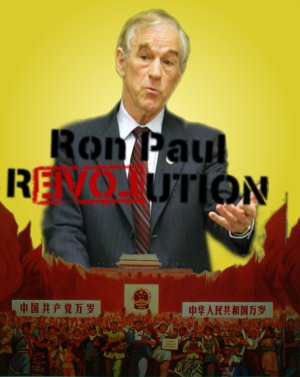Fryeday quote
Besides taking very kind notice of my article in The Freeman, Roderick Long (2008-01-18) and Micha Ghertner (2008-01-14) each also mention the epigraph that I included — a long quotation on the experience of oppression by the radical lesbian feminist philosopher Marilyn Frye. The quotation is one of my favorite passages from her essay Oppression, in The Politics of Reality. I had originally hoped to include more of it, but the epigraph had to be trimmed back in the interest of space. The full version would have been:
The experience of oppressed people is that the living of one's life is confined and shaped by forces and barriers which are not accidental or occasional and hence avoidable, but are systematically related to each other in such a way as to catch one between and among them and restrict or penalize motion in any direction. It is the experience of being caged in: all avenues, in every direction, are blocked or booby trapped.
Cages. Consider a birdcage. If you look very closely at just one wire in the cage, you cannot see the other wires. If your conception of what is before you is determined by this myopic focus, you could look at that one wire, up and down the length of it, and be unable to see why a bird would not just fly around the wire any time it wanted to go somewhere. Furthermore, even if, one day at a time, you myopically inspected each wire, you still could not see why a bird would gave trouble going past the wires to get anywhere. There is no physical property of any one wire, nothing that the closest scrutiny could discover, that will reveal how a bird could be inhibited or harmed by it except in the most accidental way. It is only when you step back, stop looking at the wires one by one, microscopically, and take a macroscopic view of the whole cage, that you can see why the bird does not go anywhere; and then you will see it in a moment. It will require no great subtlety of mental powers. It is perfectly obvious that the bird is surrounded by a network of systematically related barriers, no one of which would be the least hindrance to its flight, but which, by their relations to each other, are as confining as the solid walls of a dungeon.
It is now possible to grasp one of the reasons why oppression can be hard to see and recognize: one can study the elements of an oppressive structure with great care and some good will without seeing the structure as a whole, and hence without seeing or being able to understand that one is looking at a cage and that there are people there who are caged, whose motion and mobility are restricted, whose lives are shaped and reduced.
–Marilyn Frye (1983), Oppression, in The Politics of Reality. pp. 4–5.
In the case of poor people — and especially poor people who live in the socioeconomic or racial ghettos of large cities — both state socialists and state capitalists have spent no end of time looking at one or two wires, and wondering why the bird behind them builds its nest in such a funny, cramped shape. Since their perspective has excluded treating state oppression of the poor in any systematic way, the state socialists, rightly understanding that poor people are basically alright, wrongly figure that the problem must be the inherent vices of the market process. The state capitalists, rightly understanding that the market process is basically alright, wrongly figure that the problem must be in the vice, folly, or ignorance of individual poor people, or poor subcultures. But both of them are wrong. To understand the problem aright, you have to start by stepping back to see the whole cage. Then, and only then, can you meaningfully talk about what poor people can do about breaking out–and what you, if you are not yourself poor, can do to help them in their efforts.
